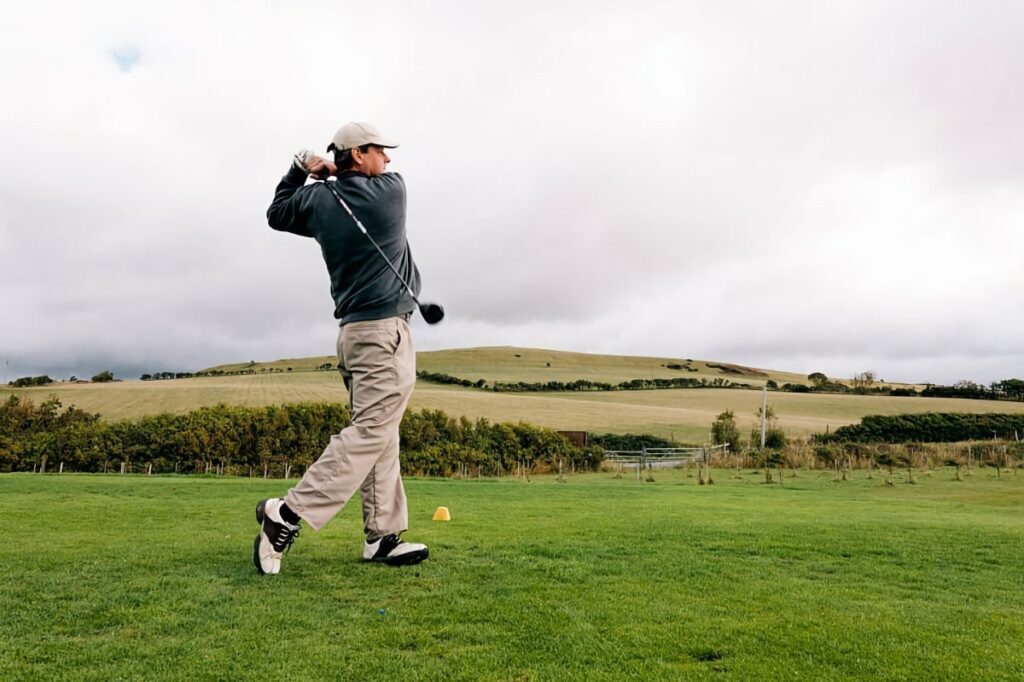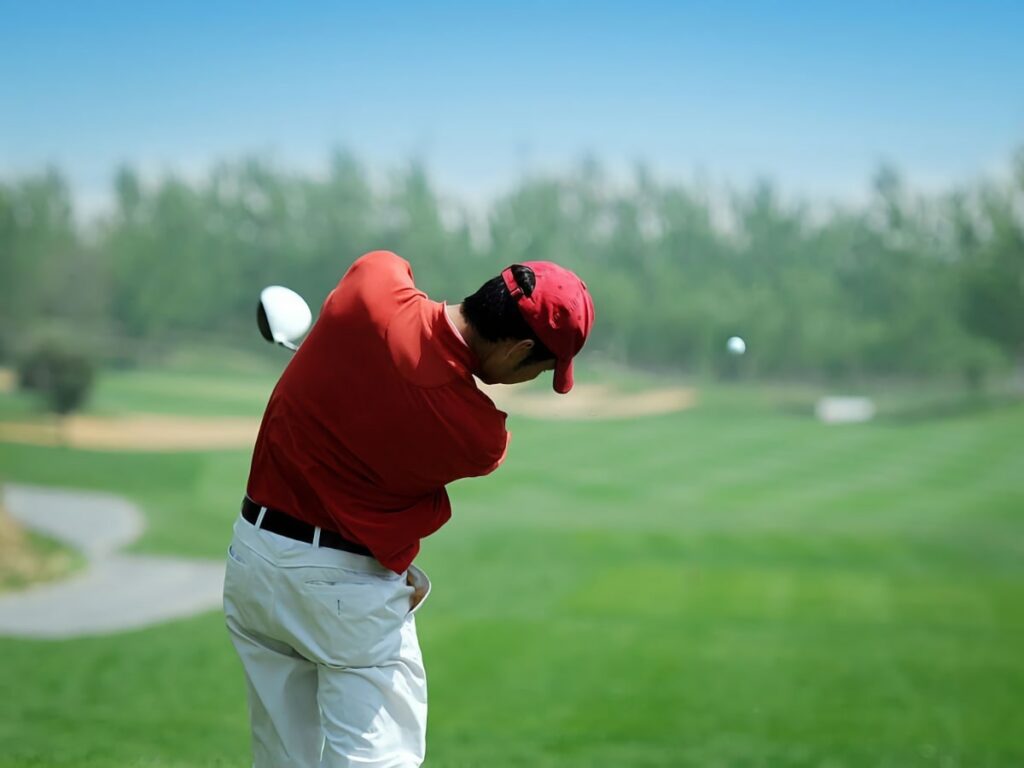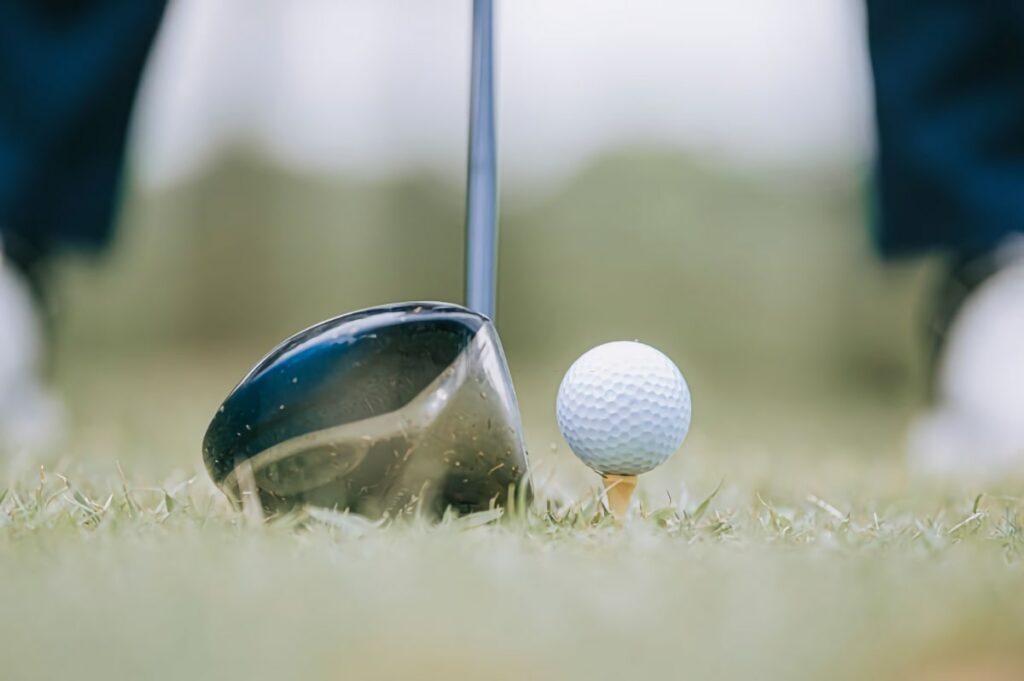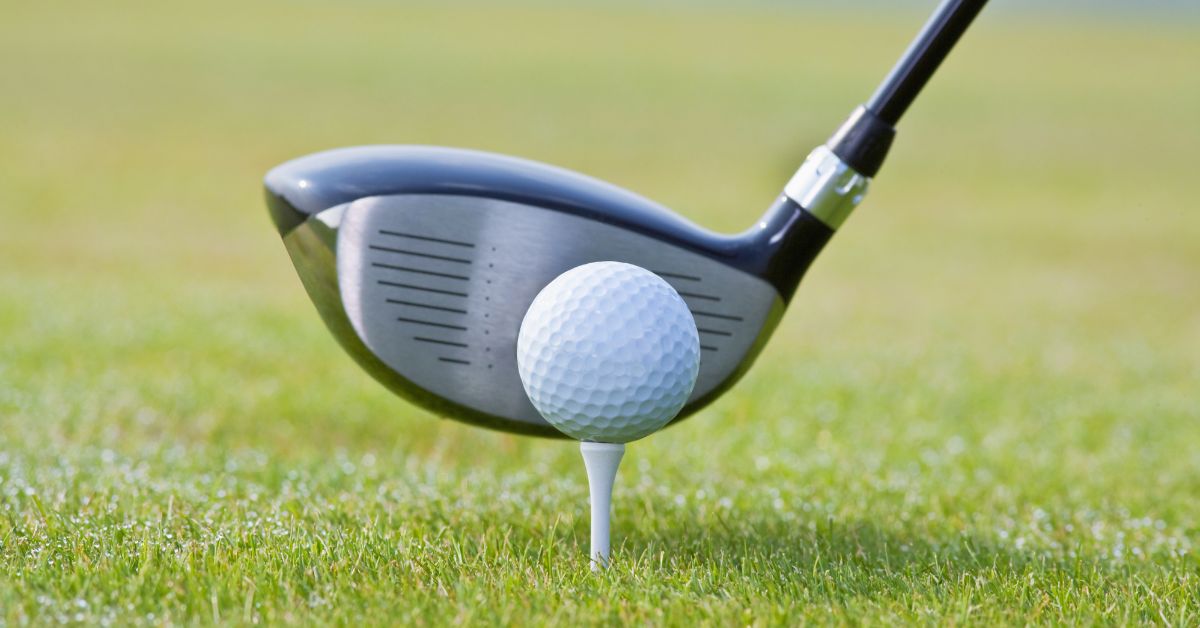Do you struggle with hitting driver low on the face?
This is a frustrating issue experienced by many golfers. It reduces launch angle, adds unwanted spin, and costs you precious yards off the tee.
Face impact position has a huge lever on your consistency with the driver. If you frequently miss the sweet spot, you’ll struggle with distance and accuracy.
That said, there are some easy adjustments that you can make. These will raise your impact position, helping you hit low-spin bombs down the fairway.
Read on for our expert tips on how to find the center of the driver face!
Hitting Driver Low on Face
Hitting driver low on the face reduces the launch angle and adds unwanted spin, causing lower distances off the tee. To avoid this, try teeing the golf ball higher. Also, shift your weight more forward during the downswing. This prevents the club from bottoming out too far behind the ball.

The Importance of Hitting the Center of the Face
In theory, golf is a simple game. Choose a target, make a swing, and hopefully land the ball reasonably close to where we aimed.
However, where you strike the ball on the face of the driver has a significant impact on where the ball will end up.
There are a number of reasons why missing the center of the clubface can be so costly on the golf course. But most importantly, the gear effect of the clubhead is the issue.
This happens both horizontally and vertically.
Horizontal Gear Effect
With woods and hybrids, the horizontal gear effect becomes an issue:
- Toe strike on the clubface – More hook spin
- Heel strike on the clubface – More slice spin
If you are susceptible to hooking the driver, it’s likely that you are striking the ball with the toe (outside) of the clubface.
Likewise, if you tend to slice your drives, there is a strong chance that your impact position is closer to the heel of the clubface.
Vertical Gear Effect
But in this article, we’re focusing on the problems associated with hitting the driver low on the face. This pertains to the vertical gear effect:
- Low strike on the clubface – Lower trajectory with more spin
- High strike on the clubface – Higher trajectory with less spin
The lower you strike the ball on the face, the lower the launch angle and the higher the spin rate. This isn’t a desirable combination if you want distance off the tee.
By contrast, a higher impact position will raise the launch angle and reduce spin, causing the ball to carry further with less drag.
To maximize distance off the tee, you should aim to hit the center of the clubface.
This will produce the optimal amount of spin at the correct launch angle, helping the ball travel further without the need to increase clubhead speed.

How to Stop Hitting Driver Low on the Face
Many golfers overcomplicate the driver swing. Put simply, there are two core reasons for hitting a driver low on the face:
- Teeing the ball too low
- Too much weight on the back foot
Firstly, let’s address the importance of tee height.
Reason: Teeing the Ball Too Low
If the mechanics of your driver swing are solid yet you’re still hitting the driver low on the face — you might simply be teeing the ball too low!
For irons, hybrids, and woods, it’s best to tee the ball fairly low as the center of the clubface is low. However, with a driver, the center of the clubface is much higher.
When the ball is teed too low, you will naturally strike the ball low on the clubface.
As a result, you’ll end up hitting driver too low with an overly flat trajectory. This limits the carry distance, even when ball speeds are fairly high.
For optimal distance, you want to be hitting up on the ball with the center of the clubface.
Solution: Tee the Ball Higher!
The solution for this one is simple — tee the ball up higher!
When the driver’s head is resting on the ground behind the ball, the equator of the ball should line up with the top of the face.
This will encourage you to hit up on the ball for a better launch angle, with the impact position higher up the face.
PRO TIP: Use Strike Spray on the face of your driver to find out exactly where the golf ball makes contact with the face.

If your ball is teed correctly and you’re still hitting your driver low on the face, the problem could lie with your weight distribution.
Reason: Too Much Weight on Your Back Foot
With the driver swing, you want to be hitting up on the ball. To enable this, you should load around 60% of your weight onto the back foot in the backswing.
During the downswing, the weight should transfer back towards the front foot.
Many amateur golfers make the mistake of keeping their weight on the back foot through impact. Too much weight on the back foot causes you to use too much bottom hand in the swing, resulting in a flipping of the hands.
This flipping motion is likely to cause the club to ground out too far behind the ball. As a result, contact with the ball will be low on the face.
Solution: Lead With Your Hands
The solution is to lead with your hands. This will naturally push your weight forward in the downswing.
To achieve this, focus on driving through the ball rather than trying to scoop the ball. This helps you to avoid backing up out of your posture during the downswing.
Shifting your weight back onto the front foot helps to keep your body lower, keeping the clubhead closer to the ground through impact.
PRO TIP: Swing easy at around 85% effort. This will relax your swing, and help you guide the clubface into the ball.
In the video below, Clay Bullard of Top Speed Golf demonstrates the importance of weight distribution and the benefits of leading with your hands in the driver swing.
Conclusion
In summary, hitting the center of the face with your driver is important for optimizing distance off the tee. It provides the best launch angle and reduces unwanted spin.
Two common mistakes result in hitting the driver low on the face:
- Teeing the ball too low — tee it higher!
- Too much weight on the back foot — move hands forward through impact
By focusing on these solutions along with having a correct driver grip, you should find your impact position climbing higher up the face.
This will improve your tee shots significantly, maximizing distance without the need to increase swing speed.
Remember, it’s all about timing!


